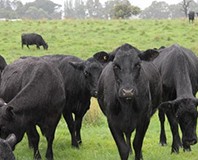Read the latest information on
Foot-and-mouth disease
 Want help to prevent or manage production diseases such as Johne’s disease (JD) in cattle now the new approach to JD is underway? Then you need to get familiar with four new biosecurity tools.
Want help to prevent or manage production diseases such as Johne’s disease (JD) in cattle now the new approach to JD is underway? Then you need to get familiar with four new biosecurity tools.
The tools, developed by Animal Health Australia (AHA) in conjunction with industry bodies, include the National Cattle Health Declaration, the Johne’s Beef Assurance Score risk profiling tool, the JD Biosecurity Checklist and the Cooperative Biosecurity Group Guidelines.
These resources have been developed to assist producers manage the transition away from government regulation of JD in cattle, which ceased in most state and territory jurisdictions on 1 July 2016, said AHA’s Executive Manager Biosecurity, Duncan Rowland.
“In the absence of regulation, there is an increased need for producers to establish and maintain effective on-farm biosecurity measures. These new tools will help producers strengthen their biosecurity arrangements to prevent JD from entering their property or assist them to manage the disease if it presents in their cattle,” said Mr Rowland.
A particularly important tool is the National Cattle Health Declaration, which replaces the Cattle Health Statement. Justin Toohey, Animal Health, Welfare, Biosecurity and Environment Advisor at Cattle Council of Australia said that the new National Cattle Health Declaration will prove vital for sellers of cattle to pass important animal health and biosecurity information onto buyers.
“It is a legal document and, when signed, commits the signer to the accuracy of the information contained on the Declaration. As part of industry’s renewed push to raise awareness around on-farm biosecurity, buyers of cattle are urged to insist on the provision of a completed Cattle Health Declaration. The receipt of information contained on the Declaration will assist buyers in protecting the health of the cattle they already own and will guide their treatment of the cattle they are purchasing once these cattle are delivered,” said Mr Toohey.
The other three tools are also heavily focused on biosecurity. The Johne’s Beef Assurance Score allows producers to perform a self-assessment of their level of risk of JD, the JD Biosecurity Checklist provides advice on JD-specific components of a farm biosecurity plan and the Cooperative Biosecurity Group guidelines can assist groups of like-minded producers enhance their collective biosecurity.
All of the tools can be accessed on the JD in cattle tools page on the AHA website. Additional resources to help producers implement biosecurity practices are also available on the Beef Cattle and Dairy Cattle pages on the Farm Biosecurity website.